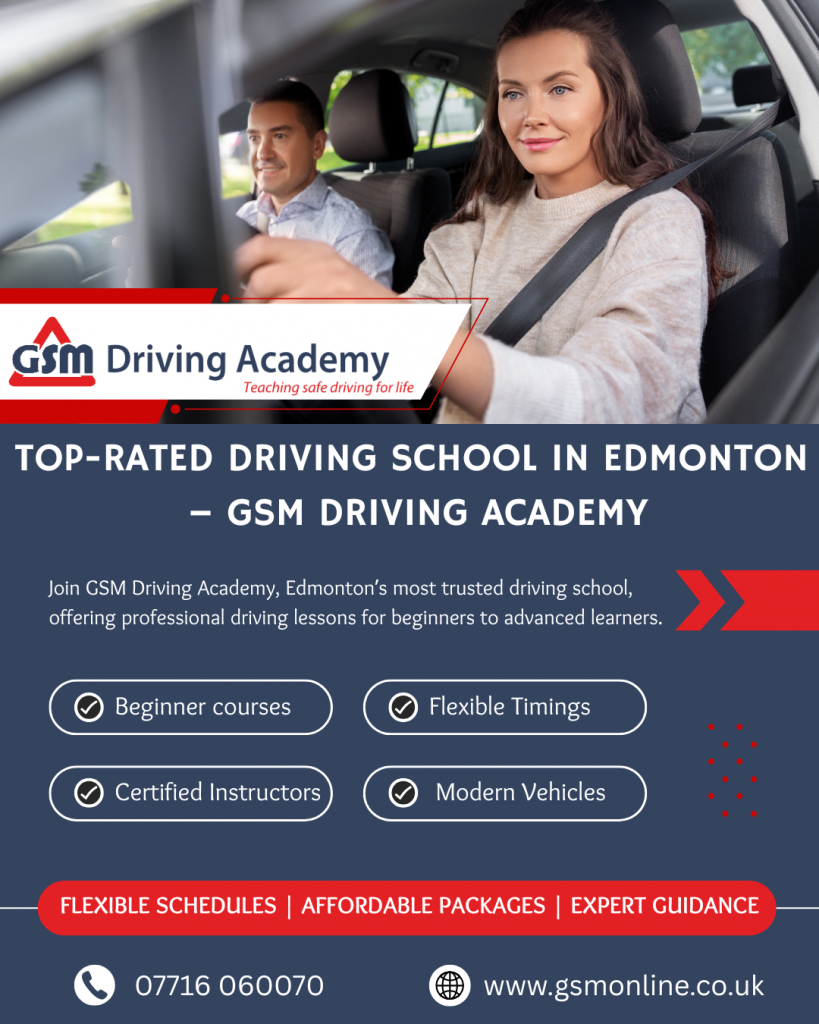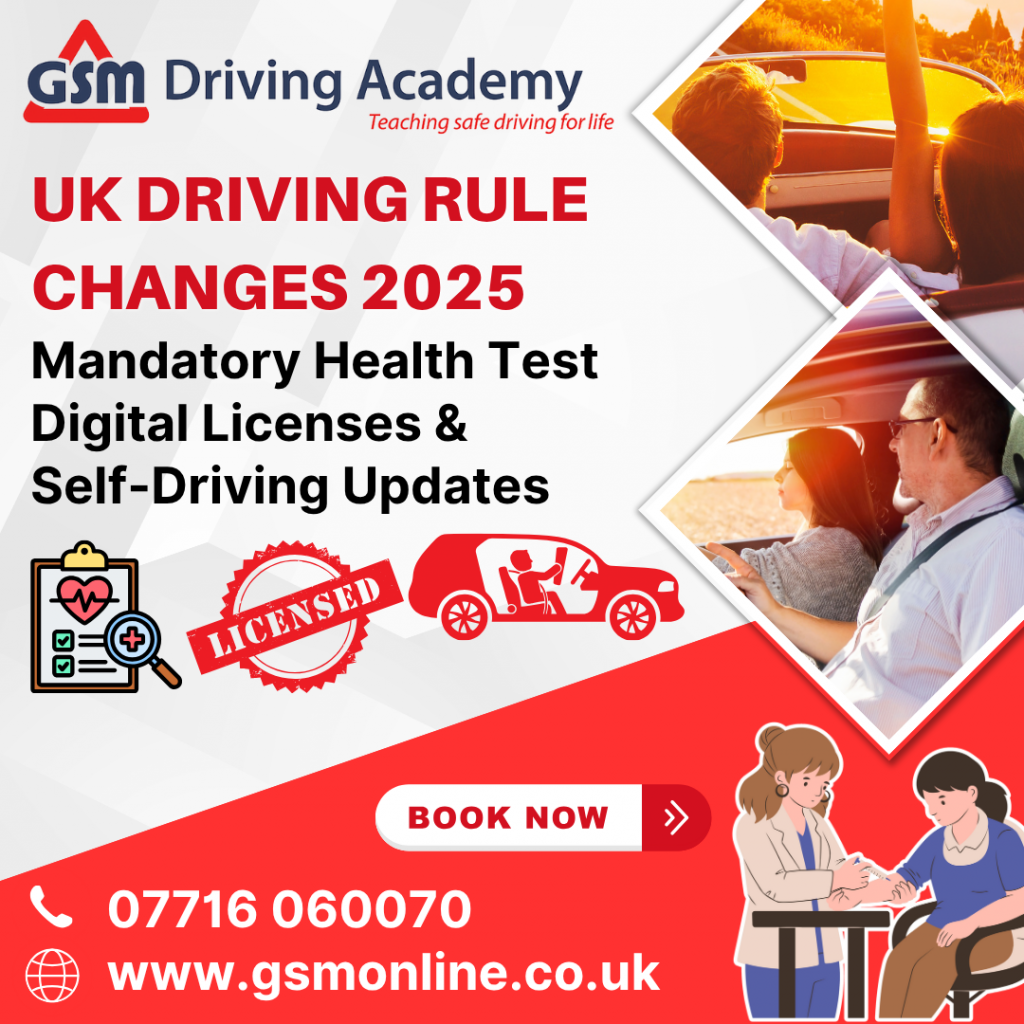Introduction—Your Trusted Partner for Driving Success in Edmonton
Getting your driver’s license is more than just passing a test; it’s also about becoming more responsible, confident, and skilled on the road. GSM Driving Academy is the name you can trust if you want driving lessons in Edmonton that are both professional and comfortable.
We are one of the best driving schools in Edmonton, and we offer a wide range of lessons for all levels of experience, from complete beginners to people who want to brush up on their driving skills. Our trained driving instructors in Edmonton are patient, professional, and dedicated to making sure you become a safe and confident driver.
At GSM Driving Academy, we try to make the classroom a place where you can learn in a way that is helpful, flexible, and will help you pass your driving test and drive safely in real life.
Why Choose GSM Driving Academy in Edmonton?
Highly Qualified Driving Instructors
Our driving instructors in Edmonton are certified by the DVSA and have taught students of all levels for many years. Each instructor’s main goal is to help you feel more confident behind the wheel while also keeping you safe on the road. Our calm and organized method lowers stress and lets you learn how to drive at your own speed.
Flexible Driving Lessons to Fit Your Schedule
We know that everyone’s daily life is different. That’s why GSM Driving Academy in Edmonton offers driving lessons at different times of the day, including early mornings, late evenings, and weekends. You can choose from hourly lessons, intensive courses, refresher sessions, and practice tests based on what works best for you.
Affordable and Transparent Pricing
We think that good driving lessons shouldn’t cost a lot of money. There are no hidden fees in our lesson packages, and they are clear and easy to understand. You will know exactly how much you are paying for each lesson or the whole course.
Local Knowledge and Test Route Familiarity
All of our driving instructors in Edmonton know the area well and know where the test centers are. This local knowledge makes sure you’re ready for the real test conditions, which will help you drive safely in both busy and quiet residential areas.
Modern Dual-Control Vehicles
Our first priority is always safety. All of our cars are new, well-kept, and have dual controls, which keeps both the student and the teacher safe during every lesson.
Driving Lessons in Edmonton—Tailored for Every Learner
Every student learns differently—that’s why our driving lessons in Edmonton are customized to your experience level and learning style.
Beginner Driving Lessons
Our beginner lessons start with the basics: how to understand the car, road signs, and how to drive safely. You’ll slowly move on to more difficult driving situations, which will help you build a strong base.
Automatic & Manual Driving Lessons
In Edmonton, we teach both automatic and manual driving lessons, so students can pick the type of car they want to learn in. People who want a simpler start should take automatic lessons, while people who want more control and flexibility should take manual lessons.
Intensive & Fast-Track Courses
Need to pass your test right away? Our intensive driving courses are great for people who want to finish their training in less time. These are set up to cover all the important topics and give you hands-on experience in a short amount of time.
Refresher Driving Lessons
Our refresher courses will help you get your confidence back behind the wheel if you haven’t driven in a while or just want to improve your skills. These classes focus on certain things, like parking, roundabouts, or driving on the highway.
Pass Plus Courses
Once you’ve passed your test, the learning doesn’t stop! Our Pass Plus course helps new drivers enhance their skills, covering advanced driving situations such as night driving, bad weather, and high-speed roads — giving you more confidence and even potential insurance discounts.
Meet Our Experienced Driving Instructors in Edmonton
We at GSM Driving Academy are proud to have a group of qualified and friendly driving instructors in Edmonton who are dedicated to helping students do well.
All of the teachers use tried-and-true methods to make lessons clear, interesting, and easy to understand. They don’t just want to help you pass your test; they also want to help you develop good driving habits for life.
We have the perfect driving instructor for you, whether you want a male or female instructor, manual or automatic lessons, or both.
Why Learners Love GSM Driving Academy
- High First-Time Pass Rate: Our well-organized training and practice tests get you ready for your driving test in every way.
- We make sure that every student feels comfortable during lessons. There is no pressure, just progress.
- Personalized Help: After each lesson, we keep track of how you’re doing and change the next ones to fit your needs.
- Help After the Test: We don’t just stop helping you after you pass. We give you tips on how to drive safely and independently.
What You’ll Learn in Our Driving Lessons
Our Edmonton driving lessons cover everything you need to know to drive safely in the real world, such as:
- Controlling a car and knowing what the dashboard symbols mean
- Control of the clutch and smooth shifts
- Starting on a hill, parking, and backing up
- Roundabouts, intersections, and lane discipline
- Stopping in an emergency and seeing hazards
- Managing speed and where the road is
- Driving alone on test routes
- Building confidence for safe driving every day
With a focus on both practical and theoretical aspects, GSM Driving Academy ensures you become a confident, safe, and responsible driver.
Frequently Asked Questions About Driving Lessons in Edmonton
Ques 1. What is the best way to make an appointment for driving lessons with GSM Driving Academy in Edmonton?
Ans: You can make a reservation online through our website or by calling us. We’ll find you an available teacher who fits your schedule and preferences.
Ques 2. Do you teach on the weekends or in the evenings?
Ans: Yes! We have flexible hours, including evenings and weekends, so you can fit us in around work or school.
Ques 3. What is the difference between lessons that are done by hand and lessons that are done automatically?
Ans: You learn how to use the clutch and gears in manual lessons, which provides you more control. It’s easier to start with automatic lessons because you don’t have to change gears.
Ques 4. How long will it take me to pass my test?
Ans: This changes based on how much you know and how sure you are of yourself. Most students need between 35 and 45 hours of professional lessons to be ready for the test.
Ques 5. Can I pick my own driving teacher?
Ans: Of course! You can ask for a male or female teacher and even change your mind if you want to. We care about your comfort.
Book Your Driving Lessons in Edmonton Today!
GSM Driving Academy is ready to help you every step of the way, whether you’re a beginner or just want to feel more confident behind the wheel.
You’ll enjoy every lesson with our trusted driving instructors in Edmonton, who have flexible schedules and proven teaching methods. You’ll also make quick progress toward your goal of becoming a confident driver.
Call to Action
📞 You can book your driving lessons in Edmonton by calling us or going to GSM Driving Academy.
Begin your journey with one of Edmonton’s best driving schools, and you’ll be able to drive with confidence for the rest of your life!



